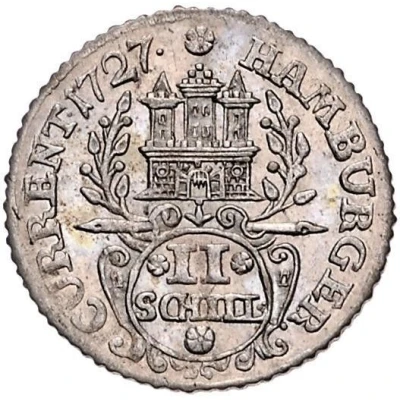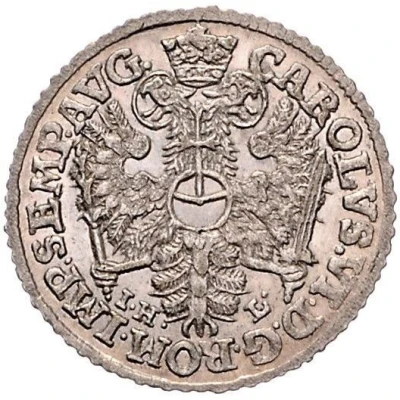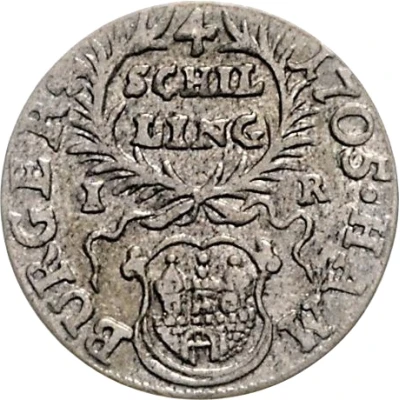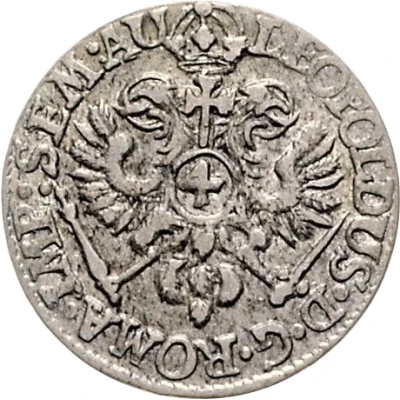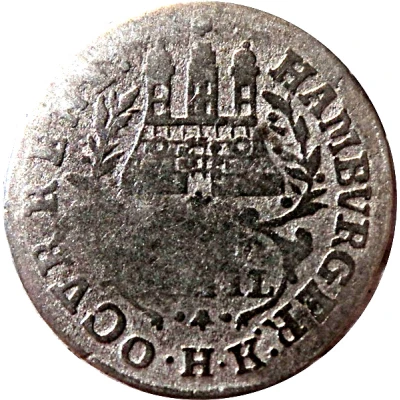
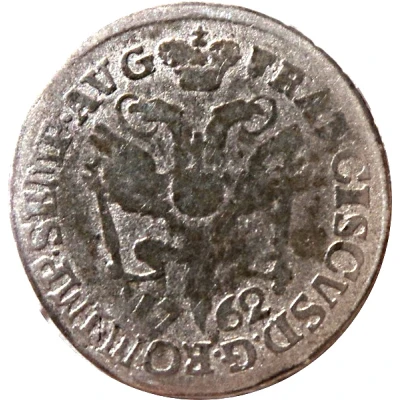

© Idolenz (CC BY-NC)
2 Schillings
| Billon (.437 silver) | 1.96 g | 21 mm |
| Issuer | Free Hanseatic city of Hamburg (German States) |
|---|---|
| Period | Free Hanseatic City (1324-1922) |
| Type | Standard circulation coin |
| Years | 1762-1763 |
| Value | 2 Schilling (1⁄24) |
| Currency | Thaler (1675-1872) |
| Composition | Billon (.437 silver) |
| Weight | 1.96 g |
| Diameter | 21 mm |
| Thickness | 0.3 mm |
| Shape | Round |
| Orientation | Medal alignment ↑↑ |
| Demonetized | Yes |
| Updated | 2024-10-05 |
| Numista | N#62595 |
|---|---|
| Rarity index | 82% |
Reverse
Crowned imperial eagle.
Script: Latin
Lettering: FRANCISCVS D. G. ROM·IMP·SEMP·AVG
Edge
Plain
Comment
Previously KM# 197Interesting fact
The 2 Schillings coin from the Free Hanseatic city of Hamburg (German States) made of Billon (.437 silver) weighing 1.96 g is interesting because it was minted during a time of great economic and political change in Europe. The coin was issued in the mid-18th century, a period of rapid urbanization, trade, and industrialization. The coin's design, which features the Hamburg coat of arms and other symbols of the city's wealth and power, reflects the growing importance of commerce and trade in the region. Additionally, the use of Billon, a silver-copper alloy, was a common practice during this time period, as it was a more affordable alternative to pure silver. This coin is a tangible reminder of the economic and cultural developments that took place in Europe during this time.
